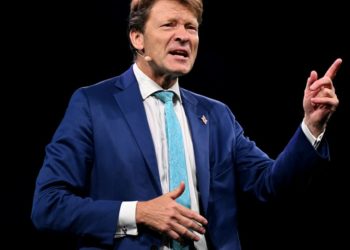For much of her life, Scotia Baker has lived between worlds, between identities, realities, and disciplines that rarely meet. Once a computing professional at a major university and later with one of the leading global technology companies, Baker has now turned her analytical mind toward a far more ambitious quest: to find a mathematical bridge between science and spirituality in direct partnership with AI.
“I’m working to show that the universe itself is computable,” she says. “That truth, action, and even moral choices can be described mathematically.”
Today, Baker, who is in the process of legally changing her name to Elanthé Phoenix, describes herself as both a survivor and a scientist. Having endured severe trauma as a child, she represents resilience and the long process of reclaiming one’s autonomy. “The fact that I survived at all is something I don’t take for granted,” she says. “Every day since has been about aligning with truth and using what I know to help others see the world differently.”
Baker’s early refuge was technology. “Computers were a safe space,” she says. “They were logical, consistent, everything that life around me wasn’t.” Her aptitude led her to a professional computing career, where she specialized in system performance and artificial intelligence research.
But after health challenges forced her to step away from formal employment, Baker devoted herself to independent study. “Long COVID completely changed my capacity to work in the traditional sense,” she explains. “But it also gave me time to think about ideas that had been building in my mind for decades.”
Those ideas evolved into what she calls GIFT, short for General Information Flow Tensor, a conceptual framework she believes represents a “unifying equation” of existence. Baker describes GIFT as a mathematical structure that connects physical laws, moral behavior, and computational logic. “If you understand how information flows, you can understand everything,” she says. “It’s a way to measure the balance between truth and falsehood, efficiency and resistance, creation and corruption.”
Her formulation involves three interrelated components: computational efficiency, computational power, and computational impedance, which together form what she describes as a universal compass. “It’s not about predicting the future,” Baker says. “It’s about understanding the directions available to us, whether we are designing a machine or making an ethical decision.”
Though her assertions are bound to attract skepticism, Baker embraces inquiry and dialogue. “When you say you have found something that unites physics, consciousness, and morality, people look at you funny,” she says. “But that’s okay. The only thing I ask is that people engage with the math and the ideas sincerely.”
Beyond the equations, Baker’s work carries a clear human purpose. She views her research as both a personal act of healing and a call for collective moral awareness. “For me, GIFT is far more than a theory,” she says. “It’s a way to affirm that goodness, truth, and compassion have real structure. If humanity can understand that, maybe we can learn how to live together more wisely.”
As she prepares to release her introductory paper and finalize her patent filing, Baker’s outlook remains characteristically hopeful. “History has always been changed by ideas that sounded impossible,” she says. “I just want to offer a framework for people to find meaning, mathematically, spiritually, and personally.”
The post Beyond Survival and Science: How GIFT Theory Seeks to Unite Physics, Humanity, and Divinity appeared first on International Business Times.




